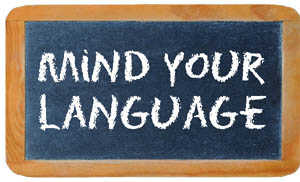WE looked forward to having friends over for a home-cooked meal. When we called to ask them if they had any food preferences, their response was that since they were ‘catholic’ (adjective, with ‘c’ in lower case) in their eating habits, they would be happy with whatever was being served. That sounds like an odd turn of phrase, does it not? People who are ‘catholic in their eating habits’ are people who are open to the idea of eating a wide variety of food.
People who are ‘catholic in taste’ have an all-embracing range of preferences. Synonyms for the word catholic in this context are diverse, diversified, broad based, wide and eclectic (deriving ideas or style from an extensive range), to name a few.
All of us are more familiar with the word ‘Catholic’(noun) which indicates a member or a follower of the Roman Catholic faith, easily the oldest denomination of Christianity with its headquarters at Rome, under the jurisdiction of the Pope. The noun form takes on an ‘s’ to form the plural ‘Catholics’. The noun form is the more prevalent and better known usage of the word. Incidentally, catholic (noun, singular) and catholics (noun, plural) can be written with either ‘C’ in the upper case or ‘c’ in the lower case.
The adjective ‘Catholic’ speaks of an affiliation to the Catholic faith. In fact, the earliest use of the word catholic from the first to the fifth century CE follows Greek and Latin usage and highlights the universality of the Christian faith. It is in the Middle English period that the word Catholic begins to affiliate itself to the Roman Catholic Church. The word ‘Protestant’ (noun, from Latin protestari/protestant; one who protests) (via German and French) comes into the English language around the mid-16th century and refers to an adherent to a form of Christianity that spread all over Europe as a result of the Reformation (religious, political and cultural upheaval that splintered Catholic Europe and brought in changes).
The late Middle English word Catholic (noun) has its origins in the old French ‘Catholique’ and from Late Latin ‘catholicus’ which draws in turn from the Greek word ‘Katholikos’. The Greek word ‘katholikos’ is comprised of two words: ‘kata’(in respect of) and ‘likos’ (the whole). The word meanings of the Latin catholicus and Greek katholikos hinge around the word ‘universal’. This particular meaning has been in existence since the very first use of the word.
‘Catholicity’is a noun form indicating a liberality or broadmindedness of view, tastes, and interests, as in “The first generation of leaders in Independent India were well known for their catholicity of expression.”
Catholicity also indicates universality and comprehensiveness, as in “Men who have read an extensive range of poetry and fiction often display a catholicity of mind and feeling.” Yet another meaning of Catholicity (‘C’ in upper case) has to do with the beliefs of the Catholic church, as in “The Roman Catholic and the Anglo Catholic are bound together by a Catholicity of beliefs.”
Our friends arrived and we sat down to a large and sumptuous meal. Our guests however declined the cheesecake dessert, protesting that their food consumption had crossed the statutory ‘Plimsoll line’. The Plimsoll line is a reference mark on a ship’s side, indicating the level to which the ship can be safely submerged in water. Excessive loading can lead to the crossing of the Plimsoll line/mark and can prove dangerous. Our friends were using a nautical metaphor to indicate that they had eaten far too much.
Unlock Exclusive Insights with The Tribune Premium
Take your experience further with Premium access.
Thought-provoking Opinions, Expert Analysis, In-depth Insights and other Member Only Benefits
Already a Member? Sign In Now










